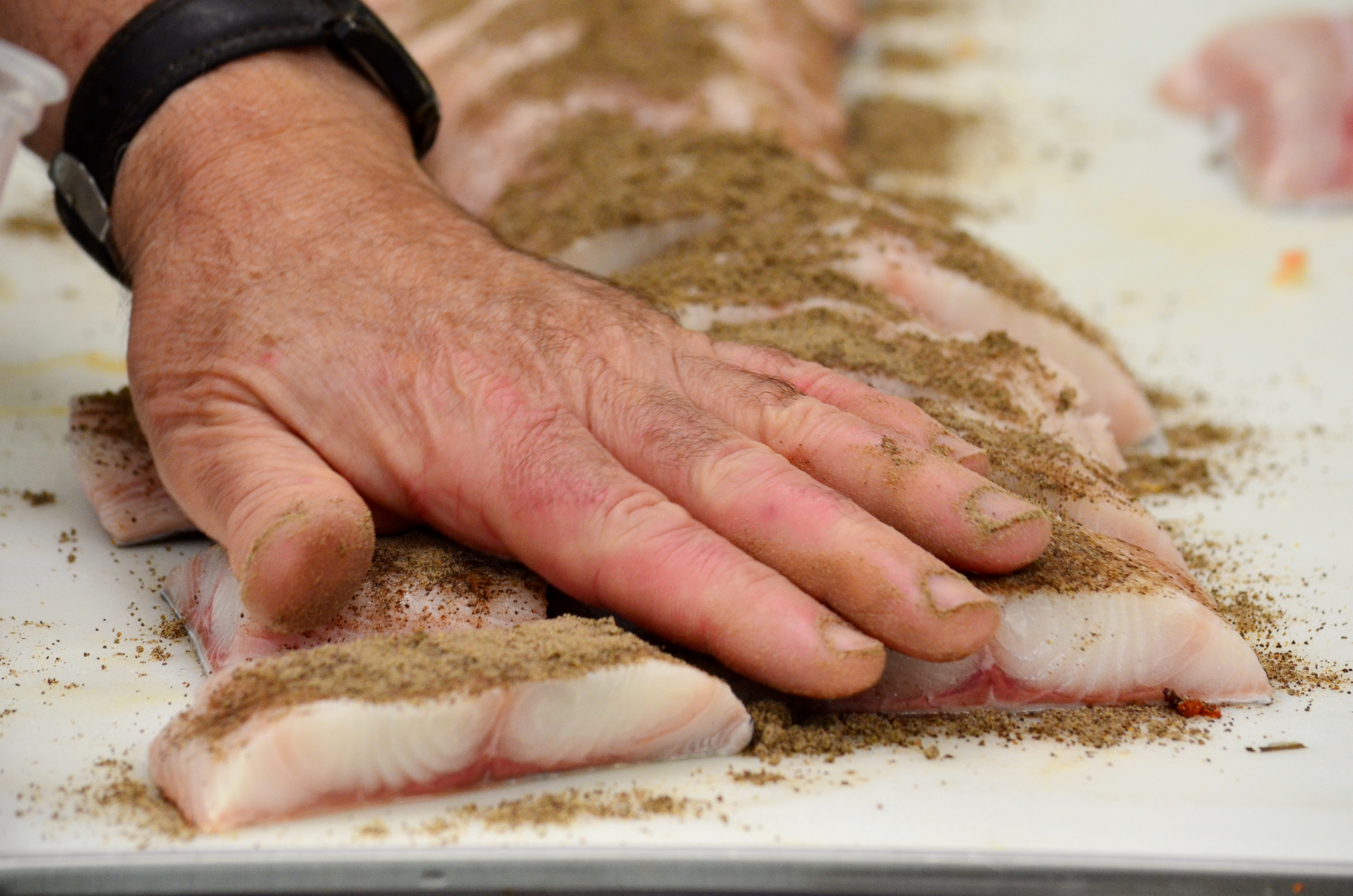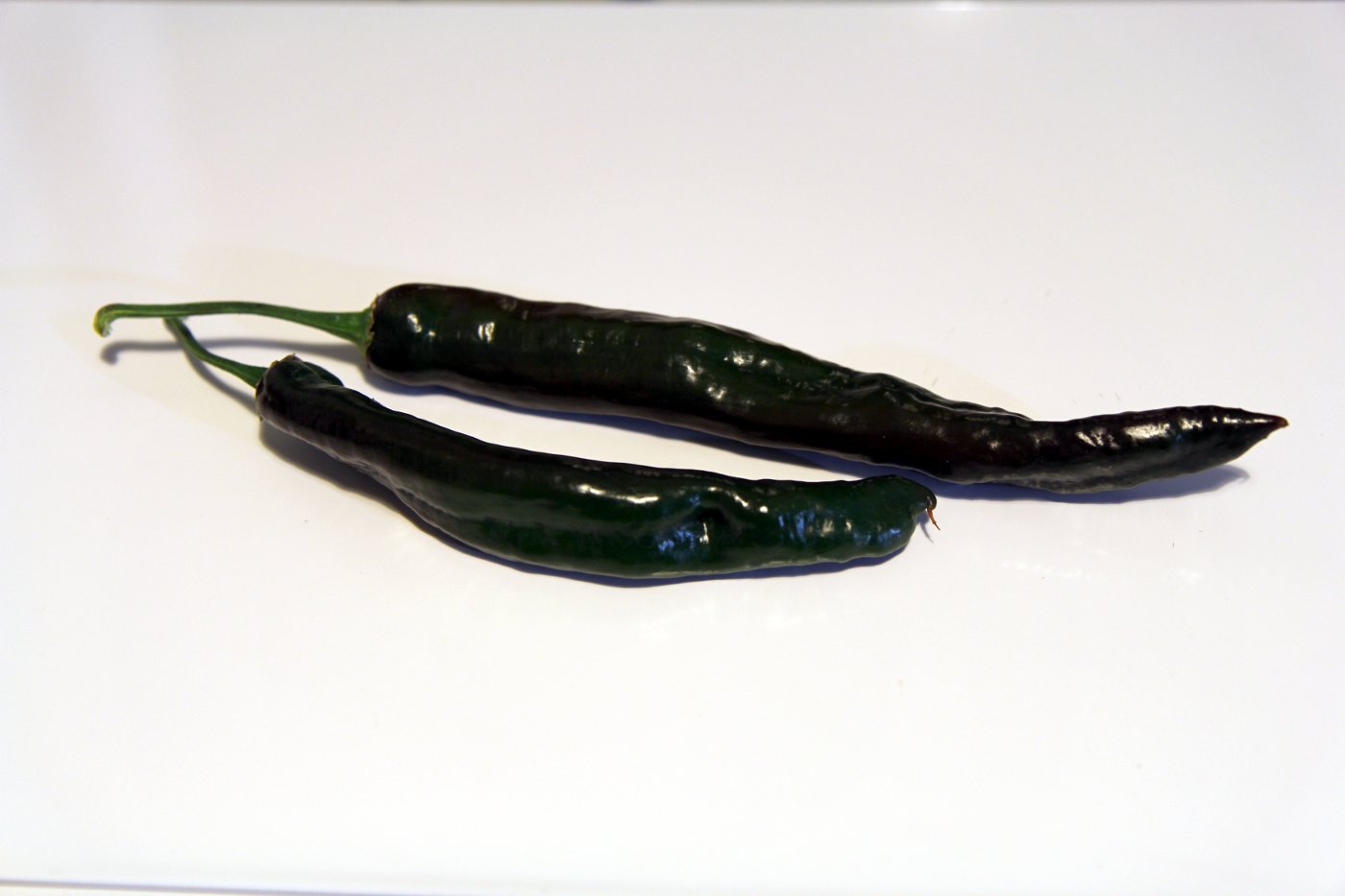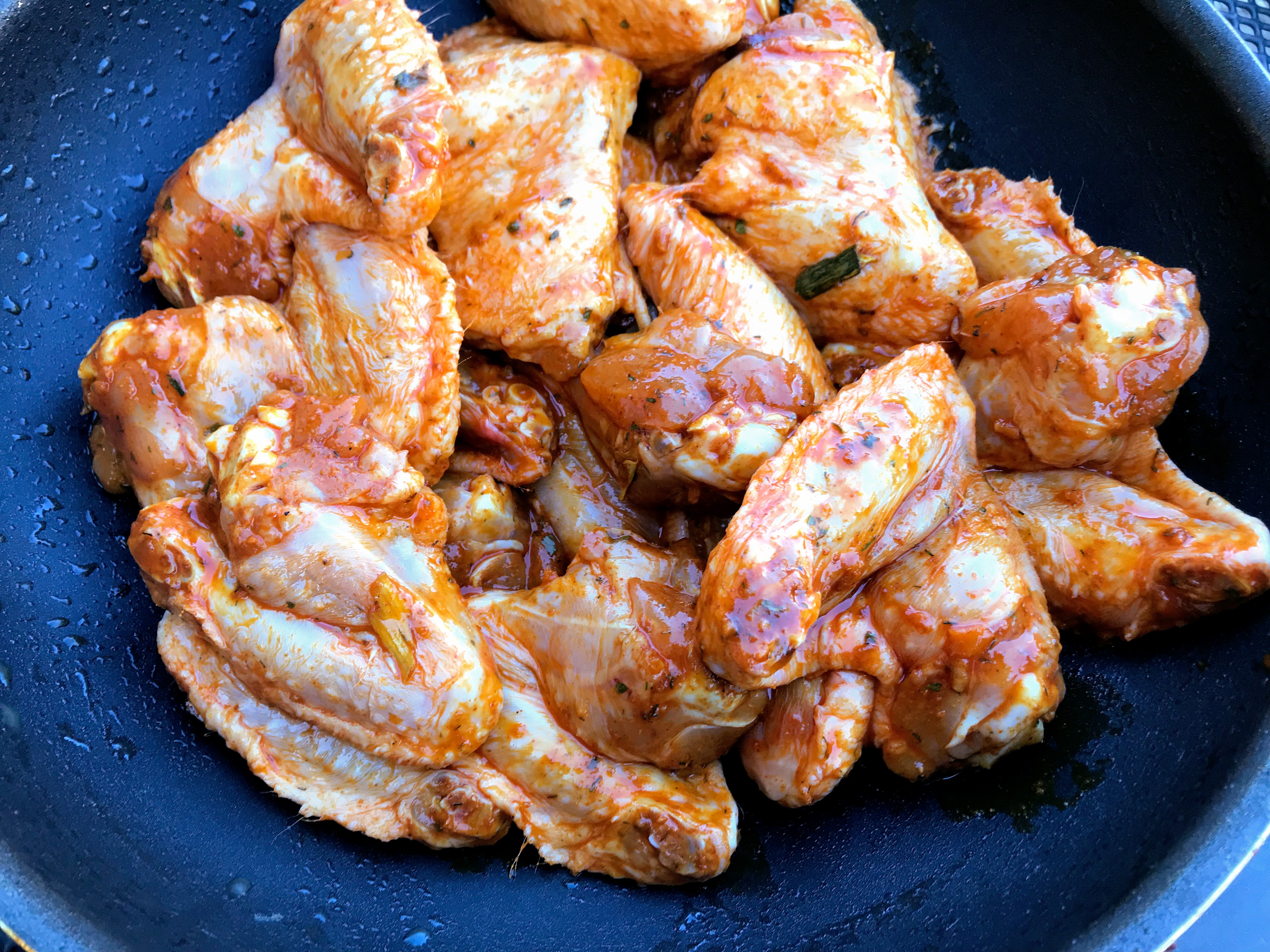|
Guajillo Chile
A guajillo chili or guajillo chile or chile guaco () or mirasol chile is a landrace variety of the species ''Capsicum annuum'' with a mirasol ("sunflower" or "looking at the sun") chile fruit type. ''Mirasol'' is used to refer to the fresh pepper, and the term ''guajillo'' is used for the dry form, which is the second-most common dried chili in Mexican cuisine. The Mexican state of Zacatecas is one of the main producers of guajillo chilies. There are two main varieties that are distinguished by their size and heat factors. The guajillo ''puya'' is the smaller and hotter of the two (, in Spanish, is to prick or poke). In contrast, the longer and wider ''guajillo'' has a more pronounced, richer flavor and is somewhat less spicy. With a rating of 2,500 to 5,000 on the Scoville scale, its heat is considered mild to medium. Guajillo chilies have many applications and are used in a variety of Mexican preparations. For instance, they are sometimes used to make salsa (e.g. mole) for t ... [...More Info...] [...Related Items...] OR: [Wikipedia] [Google] [Baidu] |
Capsicum Annuum
''Capsicum annuum'' is a fruiting plant from the family Solanaceae (nightshades), within the genus Capsicum which is native to the northern regions of South America and to southwestern North America. The plant produces Berry, berries of many colors including red, green, and yellow, often with pungent taste. It is also one of the oldest Cultivated plant taxonomy, cultivated crops, with domestication dating back to around 6,000 years ago in regions of Mexico. The genus ''Capsicum'' has over 30 species but ''Capsicum annuum'' is the primary species in its genus, as it has been widely cultivated for human consumption for a substantial amount of time and has spread across the world. This species has many uses in culinary applications, medicine, self defense, and can even be ornamental. Name The genus name ''Capsicum'' derives from a Koine Greek, Greek-based derivative of the Contemporary Latin, Latin word ''capto'', meaning "to grasp, to seize", in reference to the heat or pungency of ... [...More Info...] [...Related Items...] OR: [Wikipedia] [Google] [Baidu] |
Spice Rub
Spice rub is any mixture of ground spices that is made to be rubbed on raw food before the food is cooked. The spice rub forms a coating on the food. The food can be marinated in the spice rub for some time for the flavors to incorporate into the food, or it can be cooked immediately after it is coated in the rub. The spice rub can be left on or partially removed before cooking. Rubs are typically applied as a powder, aka "dry". Some "wet" rubs may have oil, water, or other liquid added to make a thick paste. Ingredients The spices are usually coarsely ground. In addition to spices, salt and sugar may be added to the rub for flavor and caramelization. Different salts are sometimes used for their unique qualities, such as Himalayan pink salt. The most straightforward rub is just coarsely ground black pepper as in steak au poivre. Basic dry rub or spice rub generally contain brown sugar, paprika, black pepper, chili powder, garlic powder, onion powder along with salt. Other in ... [...More Info...] [...Related Items...] OR: [Wikipedia] [Google] [Baidu] |
Capsicum Cultivars
This is a list of ''Capsicum'' cultivars belonging to the five major species of cultivated peppers (genus ''Capsicum''): ''Capsicum annuum, C. annuum'', ''Capsicum chinense, C. chinense'', ''Capsicum baccatum, C. baccatum'', ''Capsicum frutescens, C. frutescens'', and ''Capsicum pubescens, C. pubescens''. Due to the large and changing number of cultivars, and the variation of cultivar namings in different regions, this list only gives a few examples of the estimated 5000 pepper varieties that exist. Overview There are perhaps fifty thousand ''Capsicum'' cultivars grown worldwide. The National Plant Germplasm System, USDA-ARS GRIN seed collection contains 6,200 ''Capsicum'' accessions alone, including 4,000 ''Capsicum annuum'' accessions. The other ''Capsicum'' species in the United States Department of Agriculture, USDA germplasm Gene bank, repository include: ''Capsicum chinense, C. chinense, Capsicum baccatum, C. baccatum, Capsicum frutescens, C. frutescens, Capsicum pubescens ... [...More Info...] [...Related Items...] OR: [Wikipedia] [Google] [Baidu] |
List Of Smoked Foods
This is a list of smoked foods. Smoking (cooking), Smoking is the process of seasoning, flavoring, cooking, or food preservation, preserving food by exposing it to smoke from burning or smoldering material, most often wood. Foods have been smoked by humans throughout history. Meats and Fish (food), fish are the most common smoked foods, though cheeses, vegetables, and ingredients used to make beverages such as whisky, smoked beer, and ''lapsang souchong'' tea are also smoked. Smoked beverages are also included in this list. Smoked foods Beverages * Lapsang souchong – a kind of tea. * Mattha – an Indian buttermilk or yogurt drink that is sometimes smoked. * Smoked beer – beer with a distinctive smoke flavor imparted by using malted barley dried over an open flame''Beer'', by Michael Jackson, published 1998, pp.150-151 ** Grätzer. * Suanmeitang – a Chinese smoked plum drink. * Scotch Whisky – some scotch is made from grains that have been smoked over a peat fire. Fi ... [...More Info...] [...Related Items...] OR: [Wikipedia] [Google] [Baidu] |
Pasilla
The pasilla chile ( ) or ''chile negro'' is the dried form of the ''chilaca'' chili pepper, a long and narrow member of the species ''Capsicum annuum''. Named for its dark, wrinkled skin (literally "little raisin"), it is a mild to hot, rich-flavored chile. As dried, it is generally long and in diameter. The fresh narrow ''chilaca'' can measure up to long and often has a twisted shape, which is rarely apparent after drying. It turns from dark green to dark brown when fully mature. In the United States, producers and grocers sometimes incorrectly use "pasilla" to describe the poblano, a different, wider variety of pepper, the dried form of which is called an ancho. Use ''Pasilla'' are used especially in sauces. They are often combined with fruits and are excellent served with duck, seafood, lamb, mushrooms, garlic, fennel, honey, or oregano. They are sold whole or powdered in Mexico, the United States, and the United Kingdom. ''Pasilla de Oaxaca'' is a variety of smoked ' ... [...More Info...] [...Related Items...] OR: [Wikipedia] [Google] [Baidu] |
Jalapeño
The jalapeño ( , , ) is a medium-sized chili pepper Fruit, pod type cultivar of the species ''Capsicum annuum''. A mature jalapeño chili is long and wide, and hangs down from the plant. The pungency of jalapeño peppers varies, but is usually between 4,000 and 8,500 units on the Scoville scale. Commonly picked and consumed while still green, it is occasionally allowed to fully ripen and turn red, orange, or yellow. It is wider and generally milder than the similar Serrano pepper. History and etymology The jalapeño is variously named ''huachinango'', for the ripe red jalapeño, and ''chile gordo'' (meaning "fat chili pepper") also known as ''cuaresmeño''. The name ''jalapeño'' is Spanish language, Spanish for "from Xalapa", the capital city of Veracruz, Mexico. Contrary to popular belief, the jalapeño pepper is not grown in or around Xalapa, but Vicente Jiménez invented the process of pickling and canning the peppers in Xalapa. Genetic analysis of ''Capsicum annuum' ... [...More Info...] [...Related Items...] OR: [Wikipedia] [Google] [Baidu] |
Chipotle
A chipotle ( , ), or chilpotle, is a smoke-dried ripe jalapeño chili pepper used for seasoning. It is a chili used primarily in Mexican and Mexican-inspired cuisines, such as Tex-Mex and Southwestern United States dishes. It comes in different forms, such as ''chipotles en adobo'' (stewed in adobo sauce). Production Jalapeño pepper (''Capsicum annuum'') is one of the most typical ingredients of Mexican cuisine. This chili pepper is consumed at the rate of 7–9 kg per year, per capita. It is mostly consumed fresh but also in different forms, such as pickled, dried, and smoked. Jalapeño varieties differ in size and heat. Typically, a grower passes through a jalapeño field, picking the unripe, green jalapeños for the market. Jalapeños are green for most of the season, but in the fall, which is the end of the growing season, they naturally ripen and turn bright red. In Mexico and the United States, there is a growing market for ripe red jalapeños (the last stage of ma ... [...More Info...] [...Related Items...] OR: [Wikipedia] [Google] [Baidu] |
Adobado
Adobada (Spanish for " marinated") is a preparation for many dishes that are common in Mexican cuisine. Adobada is generally pork marinated in a "red" chili sauce with vinegar and oregano, but it can refer to different types of meat and to marinades closer to al pastor. It is generally served on small, pliable maize tortilla along with sautéed vegetables and cheese. New Mexico "Carne adovada" is a baked meat dish that is a specialty in New Mexican cuisine. In its simplest form, raw pork is cut into strips or cubes and placed in a large plastic bag with New Mexico red chili powder or minced red chili peppers ( Hatch, Chimayo, or guajillo chili peppers), garlic, oregano, cumin, lime/lemon juice and/or vinegar, and salt, then mixed and refrigerated overnight. The dish is cooked by baking at low heat wrapped completely in foil or in a covered dish like a casserole dish to keep the meat moist. The southern New Mexican version is usually pork cut into strips and chunks. Histori ... [...More Info...] [...Related Items...] OR: [Wikipedia] [Google] [Baidu] |
Marinade
Marinating is the process of soaking foods in a seasoned, often acidic, liquid before cooking. This sauce, called the marinade, can be either acidic (made with ingredients such as vinegar, lemon juice, or wine), or enzymatic (made with ingredients such as pineapple, papaya, yogurt, or ginger), or have a neutral pH. In addition to these ingredients, a marinade often contains oil, salt, herbs, and spices to further flavor the food items. It is commonly used to flavor foods and to tenderize tougher cuts of meat; the process may last seconds or days. Marinating is similar to brining, except that brining relies on the action of salty brine rather than the action of acids or enzymes. Marinating is also similar to pickling, except that pickling is generally done for much longer periods of months or even years, primarily as a means of food preservation. Conversely, marinating is usually performed for a few hours to a day, generally as a means of enhancing the flavor of the food or ten ... [...More Info...] [...Related Items...] OR: [Wikipedia] [Google] [Baidu] |
Landrace
A landrace is a Domestication, domesticated, locally adapted, often traditional variety of a species of animal or plant that has developed over time, through adaptation to its natural and cultural Environment (biophysical), environment of agriculture and pastoralism, and due to isolation from other populations of the species. Landraces are distinct from cultivars and from standard breeds. A significant proportion of farmers around the world grow landrace crops, and most plant landraces are associated with traditional agricultural systems. Landraces of many crops have probably been grown for millennia. Increasing reliance upon modern plant cultivars that are bred to be uniform has led to a reduction in biodiversity, because most of the genetic diversity of domesticated plant species lies in landraces and other traditionally used varieties. Some farmers using scientifically improved varieties also continue to raise landraces for agronomic reasons that include better adaptation to ... [...More Info...] [...Related Items...] OR: [Wikipedia] [Google] [Baidu] |
Tamale
A tamale, in Spanish language, Spanish , is a traditional Mesoamerican dish made of ''masa'', a dough made from nixtamalization, nixtamalized maize, corn, which is steaming, steamed in a corn husk or Banana leaf, banana leaves. The wrapping can either be discarded prior to eating or used as a plate. Tamales can be filled with meats, cheeses, fruits, vegetables, herbs, chili pepper, chilies, or any preparation according to taste, and both the filling and the cooking liquid may be seasoned. ''Tamale'' is an Anglicisation, anglicized version of the Spanish word (plural: ). comes from the Nahuatl . The English "tamale" is a back-formation from , with English speakers applying English pluralization rules, and thus interpreting the ''-e-'' as part of the Word stem, stem, rather than part of the plural suffix ''-es''. Origin Tamales originated in Mesoamerica as early as 8000 to 5000 BC. The preparation of tamales is likely to have spread from the indigenous cultures in Mesoa ... [...More Info...] [...Related Items...] OR: [Wikipedia] [Google] [Baidu] |
Mole (sauce)
Mole (; from Nahuatl ''mōlli'', ), meaning 'sauce', is a traditional sauce and marinade originally used in Mexican cuisine. In contemporary Mexico the term is used for a number of sauces, some quite dissimilar, including ''mole amarillo'' or ''amarillito'' (yellow mole), ''mole chichilo'', ''mole colorado'' or ''coloradito'' (reddish mole), ''mole manchamantel'' or ''manchamanteles'' (tablecloth stainer), ''mole negro'' (black mole), ''mole rojo'' (red mole), ''mole verde'' (green mole), ''mole poblano'', ''mole almendrado'' (mole with almond), ''mole michoacano'', ''mole prieto'', ''mole ranchero'', ''mole tamaulipeco'', ''mole xiqueno'', ''Pipián (sauce), pipián'' (mole with squash seed), ''mole rosa'' (pink mole), ''mole blanco'' (white mole), ''mole estofado'', ''tezmole'', ''clemole'', ''mole de'' olla, chimole, guacamole (mole with avocado) and ''huaxmole'' (mole with Leucaena leucocephala, huaje). The spelling “molé,” often seen on English-language menus, is a hype ... [...More Info...] [...Related Items...] OR: [Wikipedia] [Google] [Baidu] |








